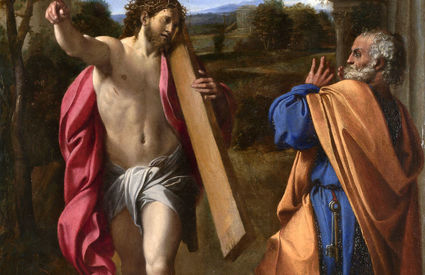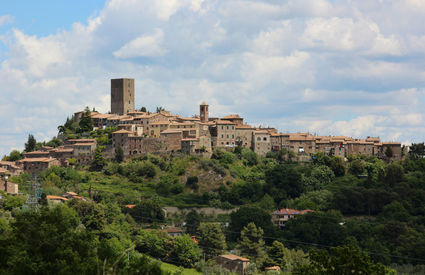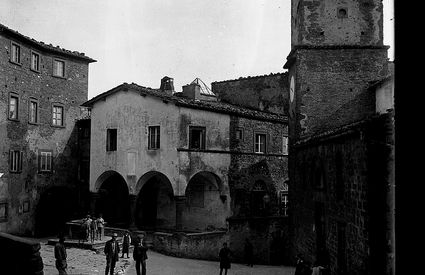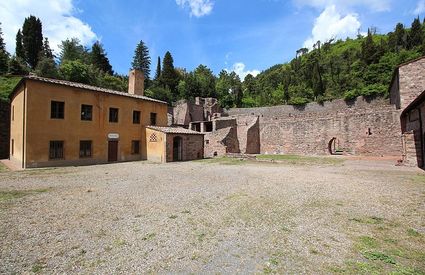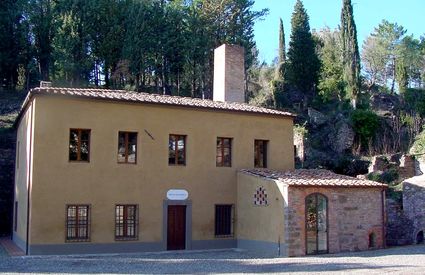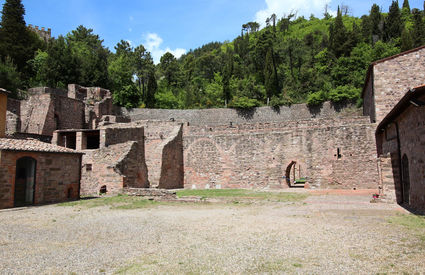Montecatini Val di Cecina
Domine, Quo Vadis?
A journey through legendary stones and neverending mines
Domine, Quo Vadis?
A journey through legendary stones and neverending mines
Peter
A long time ago, Peter ended up in the woods of Montalpruno. He was trying to protect himself by hiding amid the trees so he could escape from the guards who followed him through all the provinces of the Empire. Peter had escaped from the Roman jails of Mamertino. But he wasn’t just any old fugitive—not your classic bandit who attempted to avoid the nearby via Aurelia and its stop points—but in any case, he was still a fugitive and tried to hide himself amid the fronds and brambles of those forests. According to legend, one day an astonishing vision appeared to Peter in Poggi Sassa (still today, close to the Botro della Canonica, you’ll spot some ruins covered by plants). He asked the apparition a question destined to go down in history: “Domine, quo Vadis?” (Where are you going?) In front of Peter—the future St. Peter in the Christian tradition—stood Jesus Christ, who responded, “Roma, ut interim crucifigar” (“To Rome, to be crucified a second time”).
Caught off guard by those sharp words, and feeling shame as he faced the Redeemer, Peter decided to return to Rome toward his destiny of persecution. In their meeting place, an eternal memory remains: the imprint of the foot of Christ, impressed on a stone alongside the road.
Stones
For some, it may seem like pure coincidence, and for others, a sign: the link between Montecatini Val di Cecina and stones would not vanish with the story of Peter’s visit and Christ’s footprint. It would instead embark on a new, glorious chapter brought about by the discovery of what would become the largest copper mine in Europe.
Just one kilometer away from the medieval wonders of the center, dominated by the Belforti Tower, there is a near-legendary mine that was operational from Etruscan times until 1907. In the XIX century, it reached the apex of its evolution. It reached a point where it had a solid 10 levels, branching off into various galleries: added together they totaled 35 kilometers’ worth of tunnels, plus a series of wells which, if you stacked them one on top of the other, would have been a full 10 kilometers deep!
By 2001 all of the mines were restored and in 2003 the Mining Museum (Museo delle Miniere) was opened. If you visit, you’ll be able to admire the 19th century structures used in mineral extraction, along with the “Laverie” used for washing and refining the copper, a portion of the galleries, the administrative offices and the main extraction well.


